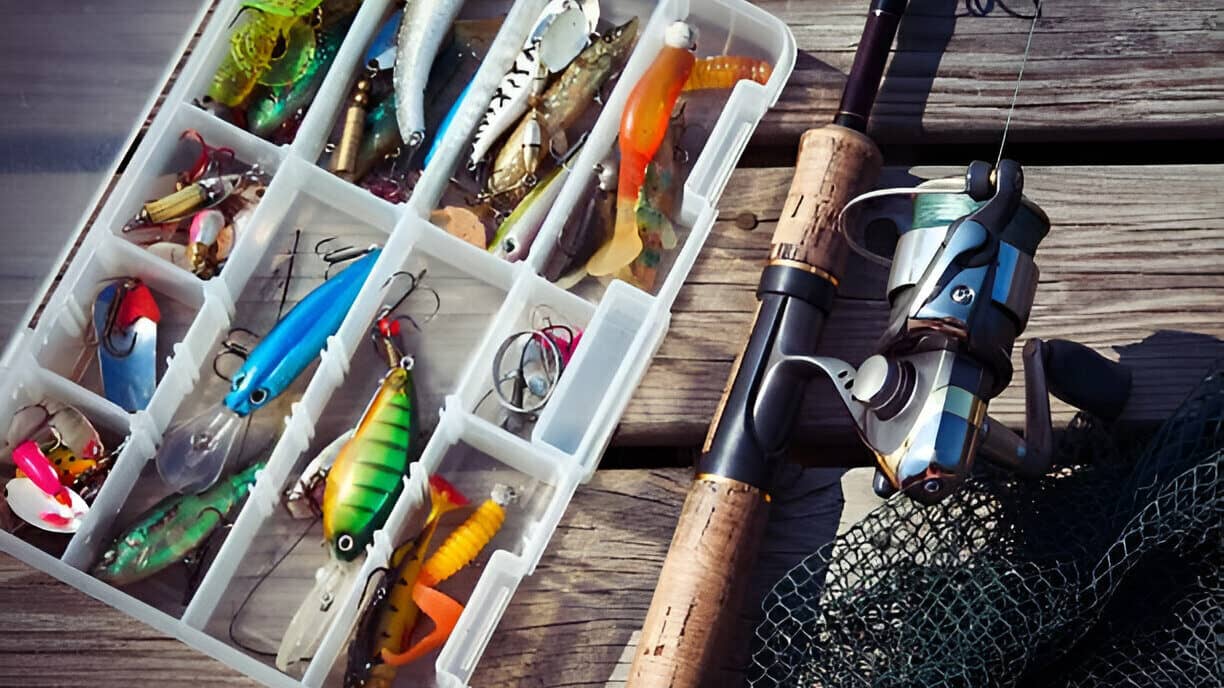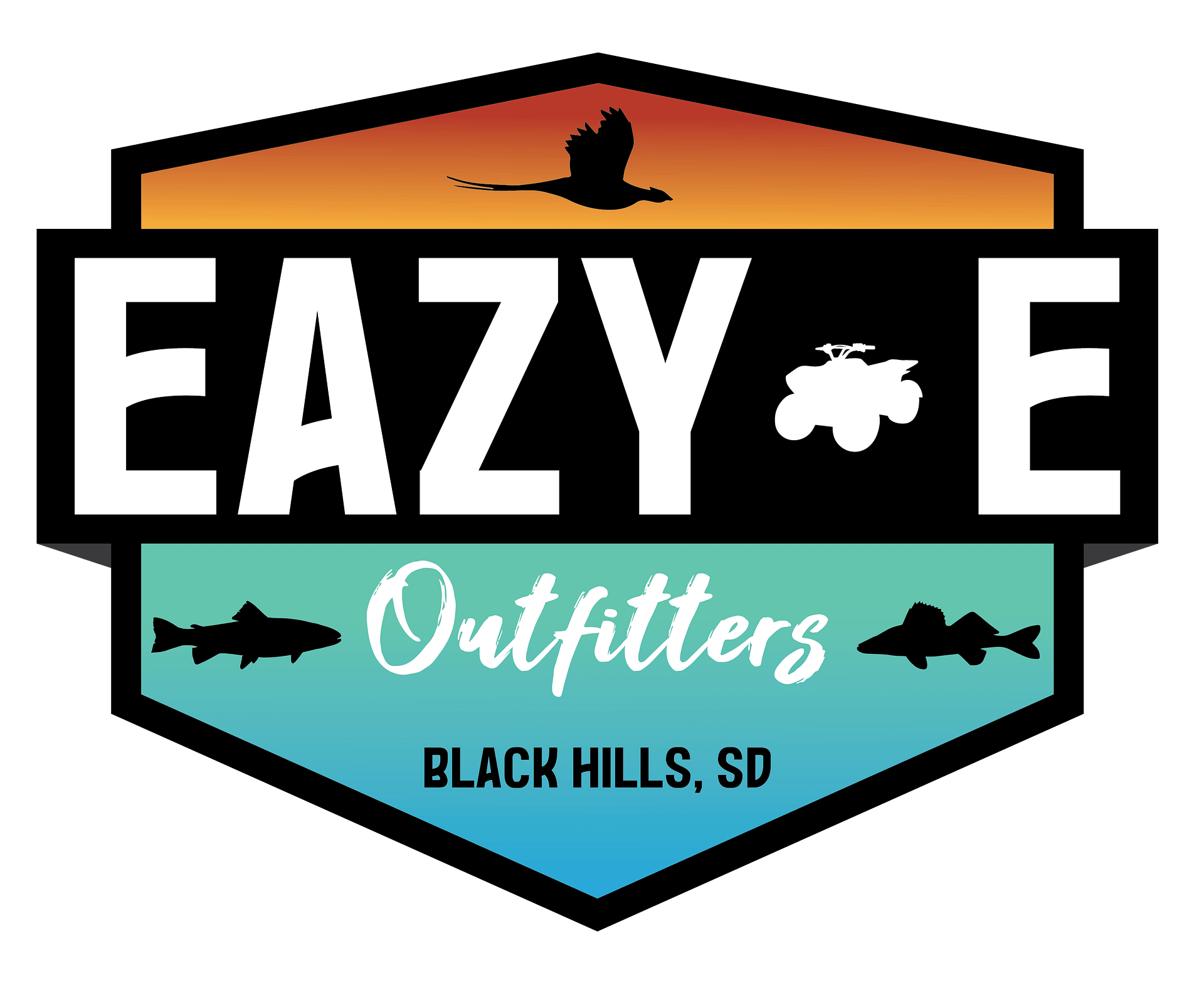Fishing in the Black Hills is an adventure filled with the possibility of landing trophy trout, bass, or walleye in some of the most scenic locations in South Dakota. Whether you’re casting a line in a tranquil mountain lake or exploring deeper waters, the right gear can make all the difference in ensuring a successful and enjoyable trip.
In this article, we’ll break down the essential fishing gear you need for your Black Hills fishing adventure. From rods and reels to bait and tackle, we’ll cover everything you need to bring to be prepared for the unique fishing conditions of the Black Hills.

1. Fishing Rods and Reels: The Backbone of Your Setup
The first and most essential piece of gear you’ll need is a reliable fishing rod and reel. The right setup depends on the type of fish you’re targeting and the fishing methods you plan to use.
For trout fishing, a medium-light spinning rod between 6 and 7 feet is ideal. This size allows for better control and accuracy when casting in smaller lakes like Canyon Lake or Sheridan Lake. If you’re targeting larger fish, like bass or walleye, a heavier rod in the 7-8 foot range is recommended. The added length provides extra leverage when reeling in larger fish, and the heavier weight makes it easier to cast longer distances.
Tip: Choose a spinning reel that matches the rod’s size and power. For trout, a 1000-2500 series reel works well, while for bass or walleye, a 3000-4000 series reel will give you the strength needed to handle larger fish.
2. Fishing Line: Choose the Right Strength
Selecting the right fishing line is crucial for successful fishing in the Black Hills. The type of fish you’re targeting and the fishing environment will dictate your line choice.
For trout fishing in clear, calm waters like those at Sheridan Lake or Deerfield Lake, a lighter line in the 6-10 lb test range is ideal. Lighter lines are less visible in the water, making them more attractive to fish. However, when fishing for larger species like bass or walleye, a heavier line in the 10-20 lb test range is recommended to ensure you can reel in these powerful fish.
Tip: If you’re fishing in areas with heavy vegetation or rocky bottom, consider using a braided line or a line with abrasion resistance. These lines are more durable and less likely to snap when fishing in tough conditions.
3. Bait and Lures: What Works Best in the Black Hills
The Black Hills offer a variety of fishing opportunities, and the type of bait or lure you use can significantly impact your success. Different species have different feeding habits, so it’s important to match your bait to the fish you’re targeting.
For trout, natural baits like worms or minnows work well, but you can also use artificial lures like spinners or spoons. In lakes like Pactola and Deerfield, rainbow trout are commonly caught with these lures. When fly fishing in areas like Sheridan Lake, consider using dry flies or nymphs to mimic the local aquatic life.
For bass and walleye, artificial lures such as jigs, crankbaits, and swimbaits are a great choice. Bass are attracted to lures that mimic smaller fish or insects, while walleye are often caught using minnows or night crawlers. If you’re fishing in deeper waters like Angostura Reservoir or Pactola, trolling with deep-diving crankbaits is an effective method for attracting walleye.
Tip: Bring a variety of baits and lures to cover different fishing situations. If the fish aren’t biting with one type of bait, switching to a different option can help you find the right match for the conditions.
4. Tackle Box: Keep Your Gear Organized
Having an organized tackle box is essential for keeping your gear accessible and ready for action. It should include hooks, sinkers, bobbers, and other accessories you’ll need during your trip. You’ll also want to pack some extras, just in case you lose a hook or need to switch up your setup.
Essential items to include in your tackle box:
- Assorted hooks in various sizes
- Split shot sinkers for bottom fishing
- Swivels to prevent line twists
- Extra bobbers for float fishing
- Needle nose pliers for removing hooks from fish
- Line cutters for quick and easy line trimming
Tip: Organize your tackle box by type of gear so you can easily find what you need without wasting time. It’s also a good idea to have a small tackle box that you can carry with you while fishing, so you’re always prepared on the go.
5. Fishing Accessories: Don’t Forget the Little Things
While the core gear is essential, there are also a few extra accessories that can make your fishing experience more comfortable and successful. These items may seem small, but they’ll improve your overall experience and give you peace of mind while fishing.
Key accessories to bring:
- Sunscreen and Sunglasses: The sun can be intense on the water, and protecting your skin and eyes is important. Sunglasses with polarized lenses are especially useful for reducing glare on the water, making it easier to spot fish.
- Landing Net: A landing net helps you safely land your catch without damaging it or losing it at the last minute.
- Cooler: If you plan on keeping your catch, a cooler is essential for storing fish until you’re ready to leave.
- Portable Chair or Blanket: If you’re fishing from the shore, a comfortable chair or blanket will make your time by the water more enjoyable.
- First Aid Kit: While fishing is generally a safe activity, accidents can happen, so it’s always a good idea to have a basic first aid kit on hand.
Tip: Consider using a fishing vest with pockets to store smaller items. This allows you to keep essential tools like pliers, a line cutter, and bait close at hand while leaving your tackle box and other gear in a larger bag or cooler.
6. Boat and Kayak Gear: For Water-Based Fishing
If you plan to fish from a boat or kayak, you’ll need additional equipment to ensure a smooth and enjoyable outing. Depending on the lake, some may allow motorboats, while others may require non-motorized craft.
For boat fishing: Make sure you have a life jacket for each person, a paddle, and a boat anchor. If you’re fishing on larger lakes like Pactola or Angostura, a fish finder can also be a great tool for locating fish in deeper waters.
For kayak fishing: A stable kayak is key, as well as a paddle, life jacket, and a dry bag for storing personal items. Many anglers also equip their kayaks with rod holders to make fishing from a seated position easier.
Tip: If you’re unfamiliar with the waters, renting a boat or kayak from a local outfitter can be a great option. They’ll also often provide safety instructions and guidance on where the best fishing spots are.
Conclusion: Gear Up and Get Ready for Your Black Hills Fishing Adventure
Fishing in the Black Hills is an experience you won’t forget. With its pristine lakes, abundant fish species, and stunning landscapes, it’s a must-visit destination for anglers of all levels. By bringing the right gear and being prepared, you’ll set yourself up for success and make the most of your time on the water.
At Eazy E Outfitting, we provide expert guides, top-notch fishing equipment, and valuable tips to ensure that your fishing trip in the Black Hills is a success. Whether you’re a seasoned pro or a beginner, we’re here to help you gear up for an unforgettable fishing adventure.
Get in touch with us today to book your next guided fishing trip and experience the best that the Black Hills has to offer!
